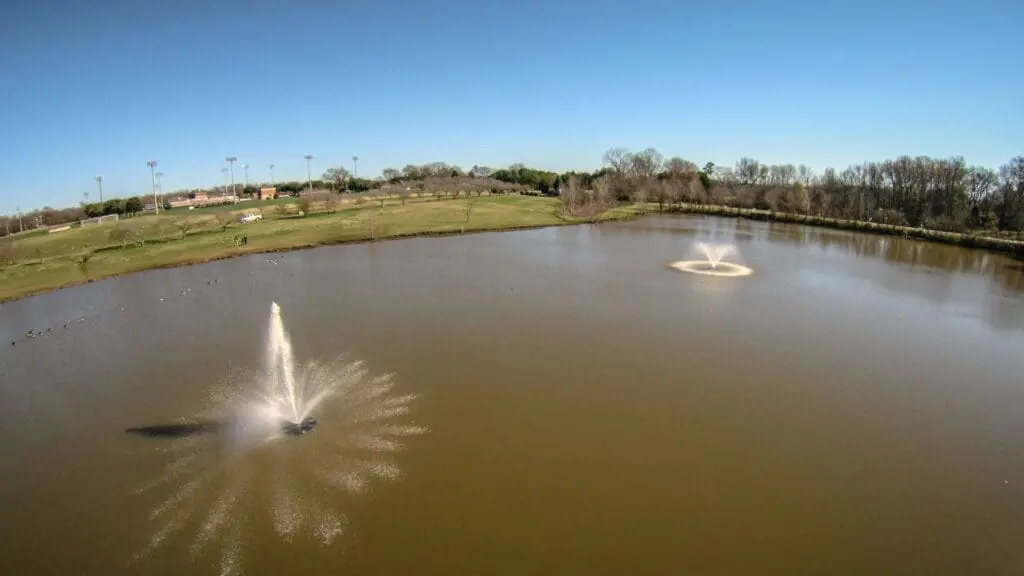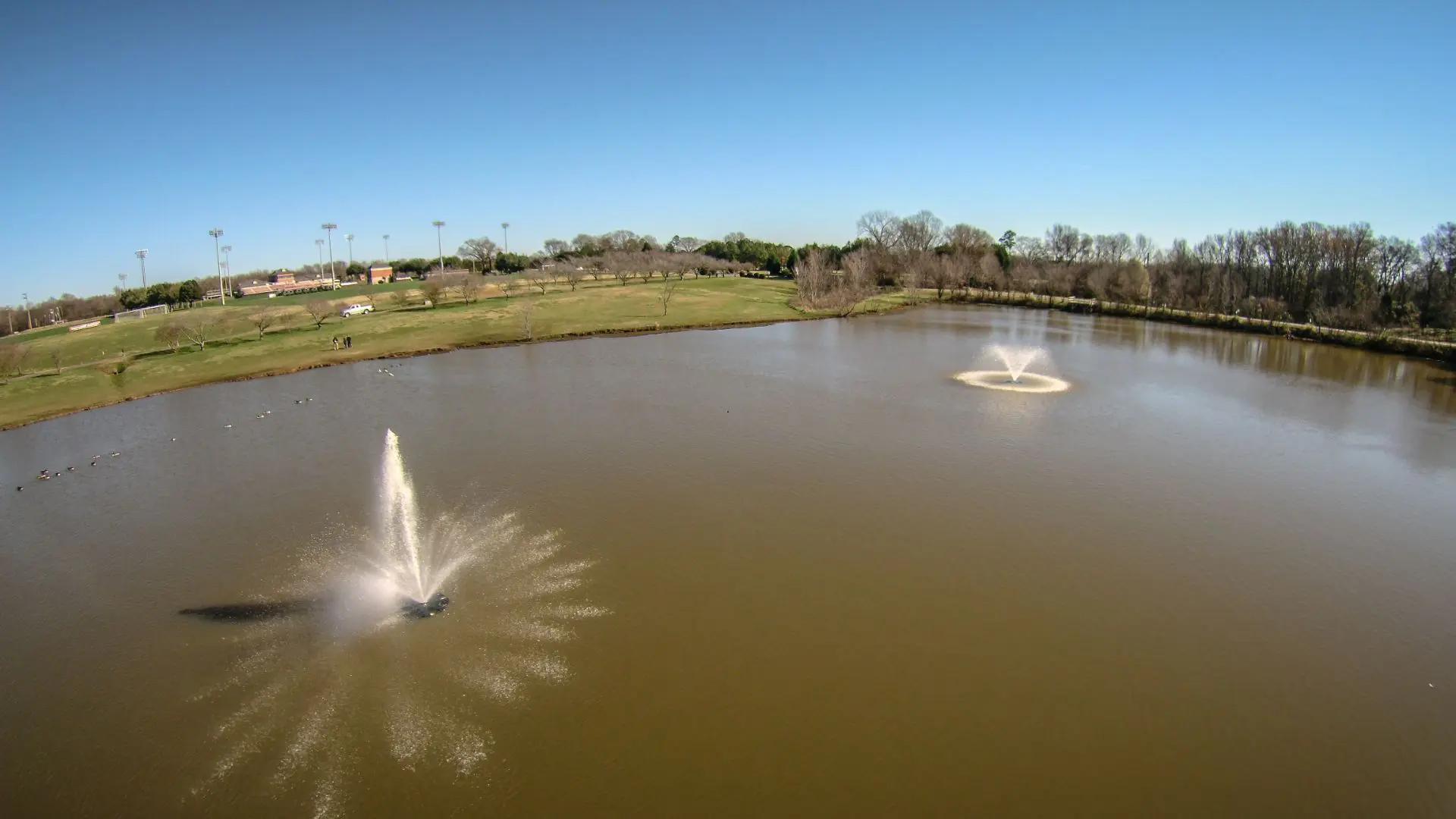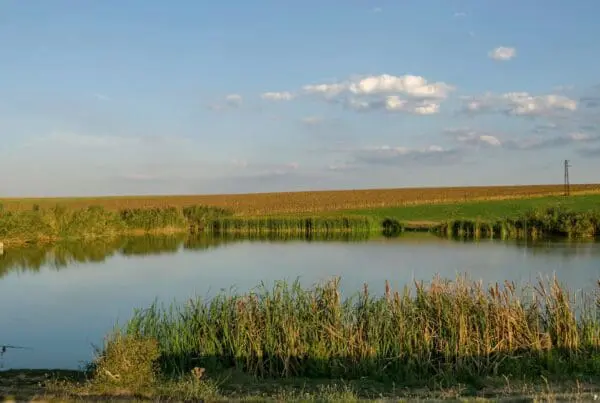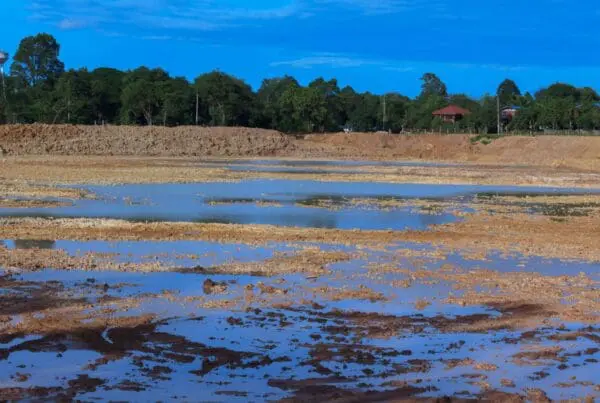Maintaining a pond’s health is crucial not only for the aesthetic appeal but also for the ecological balance of the surrounding environment. One fundamental aspect of pond maintenance is aeration. This blog will delve into why aeration is essential for ponds and how to effectively aerate your pond to achieve healthier ecosystems and fresher waters.
Understanding Pond Aeration
Aeration refers to the process of increasing the oxygen saturation of water. In the context of ponds, it involves the introduction of oxygen to the water, either through surface agitation or subsurface diffusion. By increasing dissolved oxygen levels, aeration helps create a more hospitable environment for aquatic life and improves overall water quality.
Reasons for Aerating a Pond
There are several compelling reasons to aerate a pond:
- Improving Dissolved Oxygen Levels: Adequate oxygen is vital for the survival of fish and other aquatic organisms. Aeration ensures that oxygen is evenly distributed throughout the pond, preventing oxygen-depleted zones.
- Reducing Algae Growth: Algae thrive in stagnant, nutrient-rich waters. Aeration helps circulate nutrients and prevent algae blooms by promoting the growth of beneficial bacteria that outcompete algae for resources.
- Preventing Fish Kills: Low oxygen levels can lead to fish kills, especially during hot summer months when oxygen demand is high. Aeration helps maintain stable oxygen levels, reducing the risk of fish mortality.
- Enhancing Beneficial Bacteria Activity: Beneficial bacteria play a crucial role in breaking down organic matter and maintaining water clarity. Aeration supports these bacteria by providing them with the oxygen needed for their metabolic processes.

Signs Your Pond Needs Aeration
Several indicators can signal that your pond needs aeration:
- Fish Gasping at the Surface: If you notice fish coming to the surface and gasping for air, it is a sign of low dissolved oxygen levels.
- Excessive Algae and Aquatic Weeds: Overgrowth of algae and weeds can indicate poor water circulation and high nutrient levels, both of which can be mitigated through aeration.
- Foul Odors and Murky Water: Anaerobic conditions caused by low oxygen levels can result in foul-smelling gases and murky water. Aeration helps restore clarity and reduce unpleasant odors.
Types of Pond Aeration Systems
Different types of aeration systems cater to various pond sizes and conditions. Understanding these options can help you choose the best system for your pond.
Surface Aerators
Surface aerators work by agitating the water’s surface, promoting the exchange of gases between the water and the atmosphere. Common types include fountains and paddle-wheel aerators.
Fountains: These aerators create a visually appealing water display while improving oxygen levels. They are ideal for small to medium-sized ponds and can also help with shoreline erosion control.
Paddle-Wheel Aerators: These devices use rotating paddles to agitate the water, creating surface turbulence and oxygenation. They are effective for larger ponds and provide robust aeration.
Subsurface Aerators
Subsurface aerators, also known as diffused aeration systems, introduce oxygen directly into the water through air diffusers placed at the pond’s bottom.
Diffused Aeration Systems: These systems consist of an air compressor, tubing, and diffusers. Air is pumped through the tubing to the diffusers, releasing fine bubbles that rise to the surface, increasing oxygen transfer.
Bottom Diffusers: Similar to diffused aeration systems, bottom diffusers are placed at the pond’s deepest points to ensure even oxygen distribution. They are particularly effective for deep ponds with stratified layers.
Hybrid Systems
Hybrid aeration systems combine surface and subsurface aeration to provide comprehensive oxygenation. By addressing both the surface and bottom layers, hybrid systems offer enhanced water quality and circulation.
How to Choose the Right Aeration System
Selecting the appropriate aeration system for your pond involves considering several factors, including pond size, water quality, and budget. The dimensions of your pond significantly influence your choice of aeration system, with surface aerators typically being more effective for smaller, shallow ponds, while subsurface aeration is better suited for larger, deeper bodies of water. Calculating the required aeration capacity based on your pond’s volume and depth ensures adequate oxygenation. Additionally, factors such as nutrient levels, sediment buildup, and water clarity should be considered. Ponds with high nutrient levels and significant sediment accumulation may benefit more from subsurface aeration, which promotes nutrient cycling and sediment decomposition.
Budget and Maintenance Considerations
While initial costs are important, ongoing maintenance expenses should also be factored into your decision. Surface aerators generally require less maintenance but may not provide the same level of oxygenation as subsurface systems. Consider ease of installation and operation to select a system that fits your budget and maintenance capabilities.
Installation and Maintenance of Pond Aeration Systems
Proper installation and maintenance are crucial for the effective operation of any aeration system.
Step-by-Step Installation Guide
- Pre-installation Preparation: Before installing the aeration system, assess your pond’s current condition and plan the placement of the aeration equipment. Clear any debris or vegetation that could obstruct installation.
- Installing Surface Aerators: Position surface aerators in locations where they can achieve maximum water movement. Ensure the unit is anchored securely and connected to a power source.
- Installing Subsurface Aeration Systems: For subsurface systems, place the air compressor in a sheltered location near the pond. Lay the tubing from the compressor to the pond, securing it along the way. Position the diffusers at the pond’s deepest points and connect them to the tubing.
Regular Maintenance Practices
Regular maintenance is essential to keep your aeration system functioning optimally:
- Cleaning and Inspecting Equipment: Periodically clean and inspect the aeration equipment for signs of wear or damage. Remove any debris or algae buildup from diffusers and surface aerators.
- Monitoring Dissolved Oxygen Levels: Regularly test the pond’s dissolved oxygen levels to ensure the aeration system is providing adequate oxygenation. Adjust the system settings if necessary.
- Seasonal Maintenance Tips: During colder months, consider reducing the aeration intensity to prevent ice formation. In warmer months, increase aeration to counter higher oxygen demands.
Troubleshooting Common Issues
If you encounter performance problems with your aeration system, consider the following solutions:
- Performance Problems: Check for blockages in the tubing or diffusers that could impede airflow. Ensure the compressor is functioning properly and consider replacing worn-out parts.
- Mechanical Failures: Address mechanical issues promptly to prevent further damage. Consult the manufacturer’s guidelines for troubleshooting tips or seek professional assistance if needed.
Benefits of Aerated Ponds
An effectively aerated pond offers numerous benefits, contributing to both water quality and ecosystem health.
Improved Water Quality
Aeration enhances water clarity by reducing suspended particles and preventing stratification. This results in a cleaner, more visually appealing pond. Additionally, increased oxygen levels help control algae blooms, reducing the need for chemical treatments.
Healthier Aquatic Ecosystems
By maintaining stable oxygen levels, aeration supports a diverse and healthy aquatic ecosystem. Fish populations thrive in well-aerated environments, with reduced risks of disease and stress. The growth of beneficial microorganisms is also enhanced, promoting the breakdown of organic matter and maintaining balanced nutrient levels.
Long-Term Cost Savings
While the initial investment in an aeration system may seem significant, the long-term cost savings are substantial. Aerated ponds require fewer chemical treatments, reducing ongoing maintenance expenses. The risk of fish kills and pond turnover is also minimized, protecting your investment in fish and other aquatic life.
Case Studies Examples
Real-world examples illustrate the effectiveness of pond aeration and provide valuable insights into best practices.
Example Projects
In one successful project, a recreational pond suffering from frequent algae blooms and fish kills was transformed through the installation of a diffused aeration system. Within months, water clarity improved, algae growth diminished, and fish populations stabilized, making the pond a popular spot for fishing and swimming.
Another case involved a farm pond used for irrigation that had developed significant sediment buildup and poor water quality. A combination of surface and subsurface aeration was implemented, resulting in improved water circulation, reduced sediment accumulation, and enhanced crop irrigation efficiency.
Lessons Learned
From these projects, several key lessons emerge:
- Thorough Assessment and Planning: Proper assessment of pond conditions and careful planning of aeration system placement are crucial for success.
- Combination of Methods: Using a combination of aeration methods can yield better results than relying on a single type of system.
- Ongoing Maintenance: Regular monitoring and maintenance are essential to sustain the benefits of aeration and ensure long-term pond health.
Choose FountainFreedom for Your Pond Aeration Needs
At FountainFreedom, we offer a wide range of high-quality pond aeration systems to suit different needs and budgets. Our team of experts can assist you in selecting the right system for your specific pond requirements and provide installation and maintenance support. Choose FountainFreedom for top-quality products and exceptional customer service. Contact us today to learn more about our offerings! So, make sure to choose wisely based on your specific needs and budget, conduct regular maintenance practices, and reap the numerous benefits that come with having an effectively aerated pond. And if you need any assistance or guidance, don’t hesitate to reach out to the professionals at FountainFreedom – your go-to source for all things pond aeration. With proper installation,
Aerating Your Pond for a Healthy Ecosystem
Aerating a pond is a fundamental step in maintaining a healthy, vibrant aquatic ecosystem. By understanding the principles of aeration and selecting the appropriate system for your pond, you can significantly enhance water quality, support diverse aquatic life, and reduce long-term maintenance costs. Remember, the key to successful aeration lies in thorough assessment, proper installation, and ongoing maintenance. With the right approach, your pond can become a thriving habitat with fresher, clearer waters, providing enjoyment and ecological benefits for years to come.
At FountainFreedom, we recognize that upkeep of your water features can pose significant challenges. That’s why we have developed a family of products specifically designed to make the process easier for you. Contact us today.




